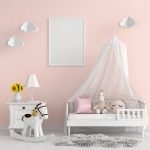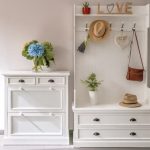Are you interested in learning how to start a home decor business? Whether it’s a passion project or an entrepreneurial pursuit, the home decor industry offers a wide range of opportunities for creative individuals looking to turn their love for interior design into a thriving business. From setting up your workspace to understanding market trends and legal requirements, this article will guide you through the essential steps to launch your very own home decor business.
One of the key reasons why many people are drawn to starting a home decor business is the opportunity to showcase their creativity and bring beauty into people’s living spaces. Home decor is more than just decorating – it’s about creating comfortable and inspiring environments that reflect the personality and lifestyle of the homeowners. Whether you specialize in vintage, minimalist, bohemian, or Scandinavian styles, there is always a niche waiting to be filled in the home decor market.
In order to embark on this exciting venture, it’s crucial to first identify your target market and understand their preferences and needs when it comes to home decor. By doing so, you can tailor your products and services to appeal to a specific demographic or consumer segment. Additionally, researching current trends and keeping an eye on what your competitors are offering will provide valuable insights that will help set your business apart in a crowded marketplace.
Finding Your Niche
When starting a home decor business, it is essential to identify your target market in order to create a successful and sustainable business. Finding your niche within the home decor industry will not only help you stand out from competitors but also allow you to tailor your products and services to meet the specific needs and preferences of your target customers.
Here are some steps on how to identify your target market for your home decor business:
1. Conduct Market Research: Researching the market will give you insight into the current trends in home decor, as well as the preferences of potential customers. Use resources such as consumer surveys, industry reports, and social media analytics to gather information about demographics, purchasing behavior, and lifestyle preferences of your potential customers.
2. Define Your Unique Selling Proposition (USP): What makes your home decor products or services unique? Identify what sets your business apart from others in the industry and use this as a basis for targeting a specific segment of the market. Whether it’s eco-friendly products, custom-made designs, or affordability, understanding your USP will help you attract the right customers.
3. Analyze Competitors: Look at existing home decor businesses in your area or online that cater to similar customer segments. Understand what they are offering, their pricing strategies, and their brand positioning. This can help you identify gaps in the market or areas where you can differentiate yourself.
By identifying your target market early on in your business planning process, you can focus your efforts on creating products and services that resonate with them while also positioning yourself for long-term success in the home decor industry.
Researching the Market
Identifying Current Home Decor Trends
Before starting a home decor business, it’s essential to be familiar with the latest trends in the industry. This includes staying up-to-date on popular styles, color schemes, and design elements. By understanding what is currently in demand, you can tailor your product offerings to meet the needs of your target market. Additionally, keeping an eye on emerging trends can give you a competitive edge in the market.
Studying Your Competitors
In order to stand out in the home decor industry, it’s crucial to have a good grasp of who your competitors are and what they are offering. Take the time to research other home decor businesses, both locally and online. Analyze their product range, pricing strategies, branding efforts, and customer reviews. Understanding what your competitors are doing well (or not so well) can help you position your own business effectively and identify areas where you can excel.
Utilizing Market Research Tools
To gain deeper insights into the market for home decor products, consider using market research tools and resources. These can include industry reports, consumer surveys, and trend forecasting services. By leveraging these resources, you can gather valuable data on consumer preferences, purchasing behavior, and market size. This information can be instrumental in shaping your business strategy and making informed decisions about product development and marketing efforts.
Creating a Business Plan
Defining Your Mission and Vision
The first step in creating a business plan is to define your mission and vision. Your mission statement should encapsulate the purpose of your home decor business, while your vision statement should outline where you aspire to take your business in the future. This will serve as the guiding principles for your company and help you stay focused on your long-term goals.
Setting SMART Goals
Once you have established your mission and vision, it’s time to set specific, measurable, achievable, relevant, and time-bound (SMART) goals for your home decor business. These goals should be realistic and aligned with your overall vision, such as reaching a certain sales target within the first year or expanding into a new market within three years. Having SMART goals will provide you with clarity and direction on how to track the progress of your business.
Identifying Key Performance Indicators (KPIs)
In addition to setting SMART goals, it’s important to identify key performance indicators (KPIs) that will help measure the success of those goals. KPIs could include metrics such as customer satisfaction ratings, profit margins, or website traffic. By monitoring these KPIs regularly, you can assess whether your home decor business is on track to achieving its objectives and make adjustments as needed.
By following these steps in creating a business plan and setting clear goals and objectives for your home decor business, you can lay a solid foundation for success in this competitive industry.
Legalities and Permits
Starting a home decor business requires an understanding of the legal requirements involved. From registering your business to obtaining the necessary permits, there are various steps you need to take to ensure that your business operates legally. Here are some key legal requirements you need to consider:
- Business Registration: The first step in starting any business is to register it with the appropriate local and state authorities. This process typically involves choosing a business name, filing the necessary paperwork, and obtaining a tax ID number.
- Permits and Licenses: Depending on the nature of your home decor business, you may need specific permits and licenses to operate legally. For example, if you plan on selling handmade items or custom furniture, you may need a sales tax permit or a home occupancy permit.
- Trademark and Copyright: If you plan on creating your own original designs or branding materials, it’s important to understand trademark and copyright laws to protect your intellectual property. Consider consulting with a lawyer to ensure that your designs are properly protected.
It’s essential to research and comply with all legal requirements before launching your home decor business. Failure to do so can result in fines, penalties, and even the closure of your business. Take the time to educate yourself on these legal matters or seek professional guidance to ensure that you operate within the bounds of the law.
Once you have a clear understanding of the legalities involved in starting a home decor business, you can proceed with confidence knowing that your venture is compliant with regulations. By taking care of these legal requirements upfront, you can focus on bringing your creative vision to life and building a successful brand within the industry.
Sourcing Products
One of the most important aspects of starting a home decor business is sourcing products. The success of your business will greatly depend on the quality and uniqueness of the products you offer to your customers. It is crucial to find reliable suppliers who can provide you with high-quality home decor items that align with your brand’s aesthetic and vision.
When looking for suppliers, it’s essential to consider factors such as cost, quality, lead time, and minimum order quantities. Researching different suppliers and comparing their offerings will help you make informed decisions about which ones to partner with. Additionally, attending trade shows and industry events can be a great way to meet potential suppliers in person and establish a rapport with them.
In addition to finding quality suppliers, it’s also important to source products that are unique and stand out in the market. Consider working with artisans, local craftsmen, or even creating custom pieces to differentiate your business from competitors.
By offering one-of-a-kind items, you can attract customers who are looking for something special and exclusive for their homes. And remembering that sourcing products doesn’t just stop once; it’s an ongoing process as you continue to refresh your offerings and stay ahead of trends in the home decor industry.
Marketing and Branding
When starting a home decor business, marketing and branding are crucial aspects of establishing your brand identity and promoting your business. Your marketing efforts will determine how you attract potential customers and build brand awareness, while branding will help distinguish your business from competitors. By putting in the effort to create a strong brand identity and develop effective marketing strategies, you can set your home decor business up for success.
To start, it is essential to define your target market and understand their preferences and needs. This will guide your marketing efforts and help you tailor your messaging to effectively reach your audience. Consider factors such as age, income level, location, and lifestyle when identifying your target market. Conducting market research can also provide valuable insights into consumer behavior and preferences, helping you position your home decor business in the market effectively.
Once you have a clear understanding of your target market, it’s time to establish your brand identity. This includes creating a unique brand name, logo, color scheme, and overall aesthetic that aligns with the style of home decor products you offer. Consistency is key when it comes to branding – ensure that all marketing materials and communications reflect your brand identity to build a cohesive and recognizable brand image.
In terms of promotion, consider utilizing various marketing channels such as social media, email marketing, influencer partnerships, and sponsorships to reach potential customers. Creating engaging content that showcases your products and offers valuable design inspiration can also help attract customers to your home decor business. Remember that successful marketing and branding efforts take time to yield results, so be patient and stay consistent with your efforts to build a strong brand presence in the home decor industry.
Setting Up Your Workspace
When starting a home decor business, setting up your workspace is crucial to ensure smooth operations and a conducive environment for creativity. Organizing and designing your home decor studio can impact the efficiency of your work and the overall appeal of your brand. Whether you have a dedicated room or a small corner in your home, here are some tips on how to set up your workspace for success.
First, consider the layout of your home decor studio. It should be functional and inspire creativity. Choose furniture and storage solutions that are both practical and aesthetically pleasing. You’ll want to have easy access to materials, tools, and equipment while also maintaining an organized and visually appealing space for when clients visit.
Next, focus on the design aesthetic of your studio. Your workspace should reflect your brand identity and style. Consider elements such as color scheme, lighting, and decor that align with the image you want to portray for your business. Creating a cohesive and inspiring environment will not only enhance productivity but also leave a lasting impression on clients.
Lastly, don’t forget about practical considerations such as safety and comfort. Make sure to invest in quality ergonomic furniture, adequate lighting, and proper ventilation. These factors are essential for creating a healthy work environment that allows you to focus on growing your home decor business.
By carefully organizing and designing your home decor studio, you can create a space that fosters creativity, productivity, and professionalism – all of which are essential for the success of your home decor business.
Managing Finances
In conclusion, starting a home decor business can be a rewarding and profitable venture for those with a passion for design and creativity. By finding your niche and identifying your target market, researching the market trends and competitors, creating a solid business plan, and understanding the legal requirements, you can set yourself up for success in the industry.
Additionally, sourcing products from quality suppliers, establishing your brand identity through effective marketing and branding, organizing and designing your workspace effectively, and managing your finances through budgeting, pricing strategies, and revenue streams will all be essential steps in building a successful home decor business.
One of the key factors in successfully launching a home decor business is having a clear understanding of how to manage your finances. Budgeting effectively will help you allocate resources efficiently and determine which areas of the business require more investment.
Setting competitive but sustainable pricing strategies will ensure that you are able to cover costs while remaining attractive to potential customers. In addition, identifying multiple revenue streams such as selling products online or offering design consulting services can help diversify income sources for long-term financial stability.
Ultimately, starting a home decor business requires dedication, hard work, and strategic planning. By following these steps outlined here – including finding your niche market, conducting thorough research on market trends and competitors, creating a solid business plan with achievable goals, understanding legal requirements obtaining necessary permits; finding reliable suppliers while implementing effective marketing strategies – any aspiring entrepreneur can position themselves for success in the home decor industry.
With determination and attention to detail throughout each aspect of the process,it is possible to turn your passion for interior design into a thriving business endeavor.
Frequently Asked Questions
How Profitable Is Home Decor Business?
The profitability of a home decor business can vary depending on various factors such as the target market, quality of products, competition, and marketing strategies. A well-planned and executed home decor business has the potential to be quite profitable.
What Do I Need to Start a Home Decor Business?
To start a home decor business, you will need a solid business plan, funding for initial investment in inventory and marketing, a good eye for design trends, product sourcing connections, and knowledge of the industry. It’s also important to have a strong online presence and marketing strategy.
How Do I Start My Own Home Decorating Business?
Starting your own home decorating business involves several key steps. First, conduct market research to identify your target audience and understand their needs. Then, create a detailed business plan outlining your goals, target market, financial projections, and marketing strategies.
Next, secure funding for your startup costs and set up your legal business structure. Finally, develop relationships with suppliers and start promoting your business through various channels like social media and partnerships with other businesses in the industry.

I’m thrilled to be your companion on this exciting journey through the world of home decor and design. With a passion for turning houses into homes and a keen eye for the finer details, I’m here to help you transform your living spaces into beautiful, functional, and meaningful havens.





